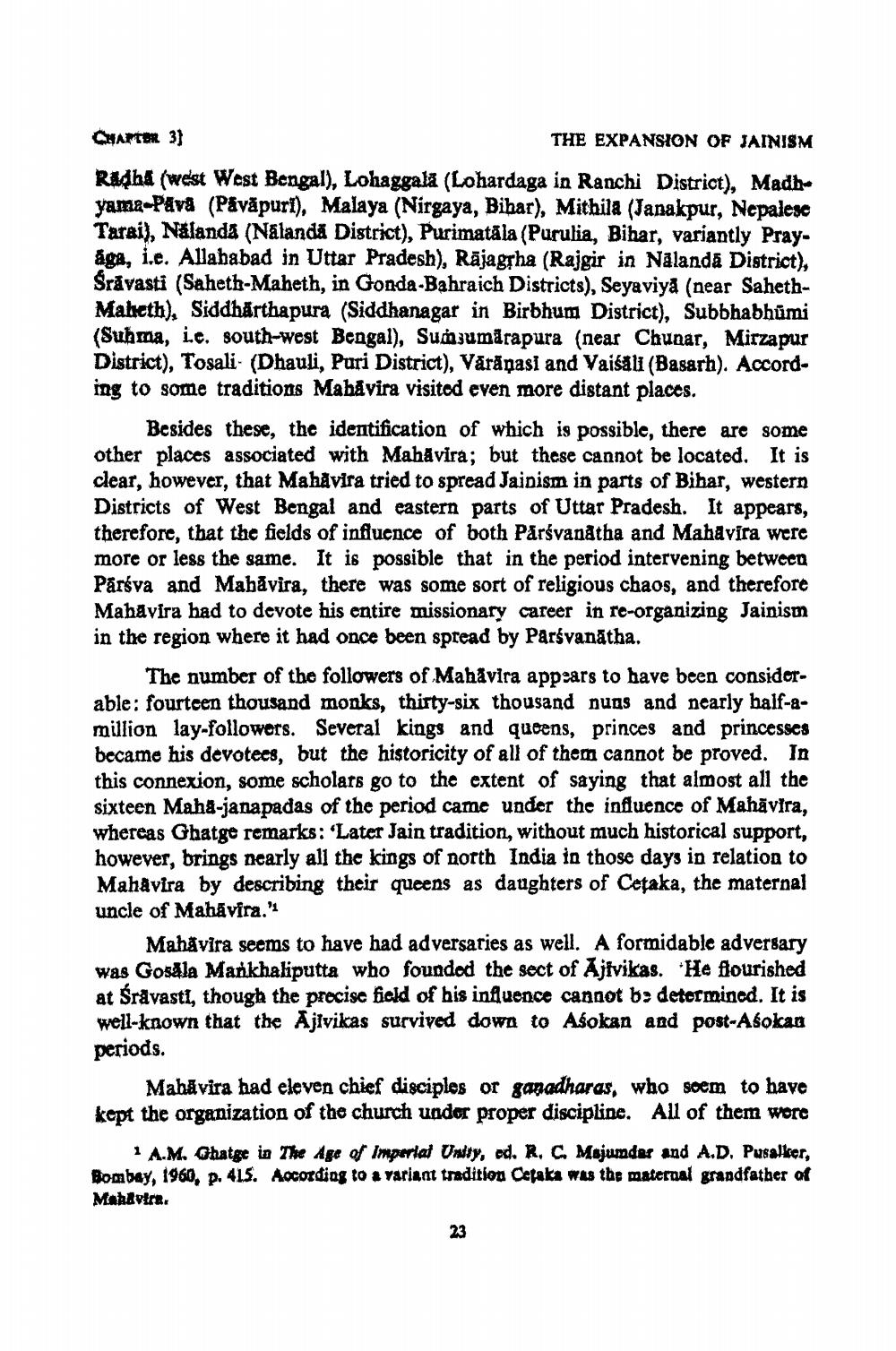________________
CHAPTER 3]
THE EXPANSION OF JAINISM
Radha (west West Bengal), Lohaggala (Lohardaga in Ranchi District), Madh yama-Pava (Päväpuri), Malaya (Nirgaya, Bihar), Mithila (Janakpur, Nepalese Tarai), Nalanda (Nalanda District), Purimatala (Purulia, Bihar, variantly Prayaga, i.e. Allahabad in Uttar Pradesh), Rajagṛha (Rajgir in Nalanda District), Śravasti (Saheth-Maheth, in Gonda-Bahraich Districts), Seyaviya (near SahethMabeth), Siddharthapura (Siddhanagar in Birbhum District), Subbhabhūmi (Suhma, i.e. south-west Bengal), Sumзumarapura (near Chunar, Mirzapur District), Tosali (Dhauli, Puri District), Vārāṇasi and Vaisali (Basarh). According to some traditions Mahavira visited even more distant places.
Besides these, the identification of which is possible, there are some other places associated with Mahavira; but these cannot be located. It is clear, however, that Mahavira tried to spread Jainism in parts of Bihar, western Districts of West Bengal and eastern parts of Uttar Pradesh. It appears, therefore, that the fields of influence of both Parsvanatha and Mahavira were more or less the same. It is possible that in the period intervening between Parsva and Mahavira, there was some sort of religious chaos, and therefore Mahavira had to devote his entire missionary career in re-organizing Jainism in the region where it had once been spread by Parsvanatha.
The number of the followers of Mahavira appears to have been considerable: fourteen thousand monks, thirty-six thousand nuns and nearly half-amillion lay-followers. Several kings and queens, princes and princesses became his devotees, but the historicity of all of them cannot be proved. In this connexion, some scholars go to the extent of saying that almost all the sixteen Maha-janapadas of the period came under the influence of Mahāvira, whereas Ghatge remarks: 'Later Jain tradition, without much historical support, however, brings nearly all the kings of north India in those days in relation to Mahavira by describing their queens as daughters of Cetaka, the maternal uncle of Mahāvira."
Mahavira seems to have had adversaries as well. A formidable adversary was Gosala Mankhaliputta who founded the sect of Ajivikas. He flourished at Śrävasti, though the precise field of his influence cannot be determined. It is well-known that the Ajlvikas survived down to Asokan and post-Aśokan periods.
Mahavira had eleven chief disciples or ganadharas, who seem to have kept the organization of the church under proper discipline. All of them were
1 A.M. Ghatge in The Age of Imperial Unity, ed. R. C. Majumdar and A.D. Pusalker, Bombay, 1960, p. 415. According to a variant tradition Cetaka was the maternal grandfather of Mahavira.
23




